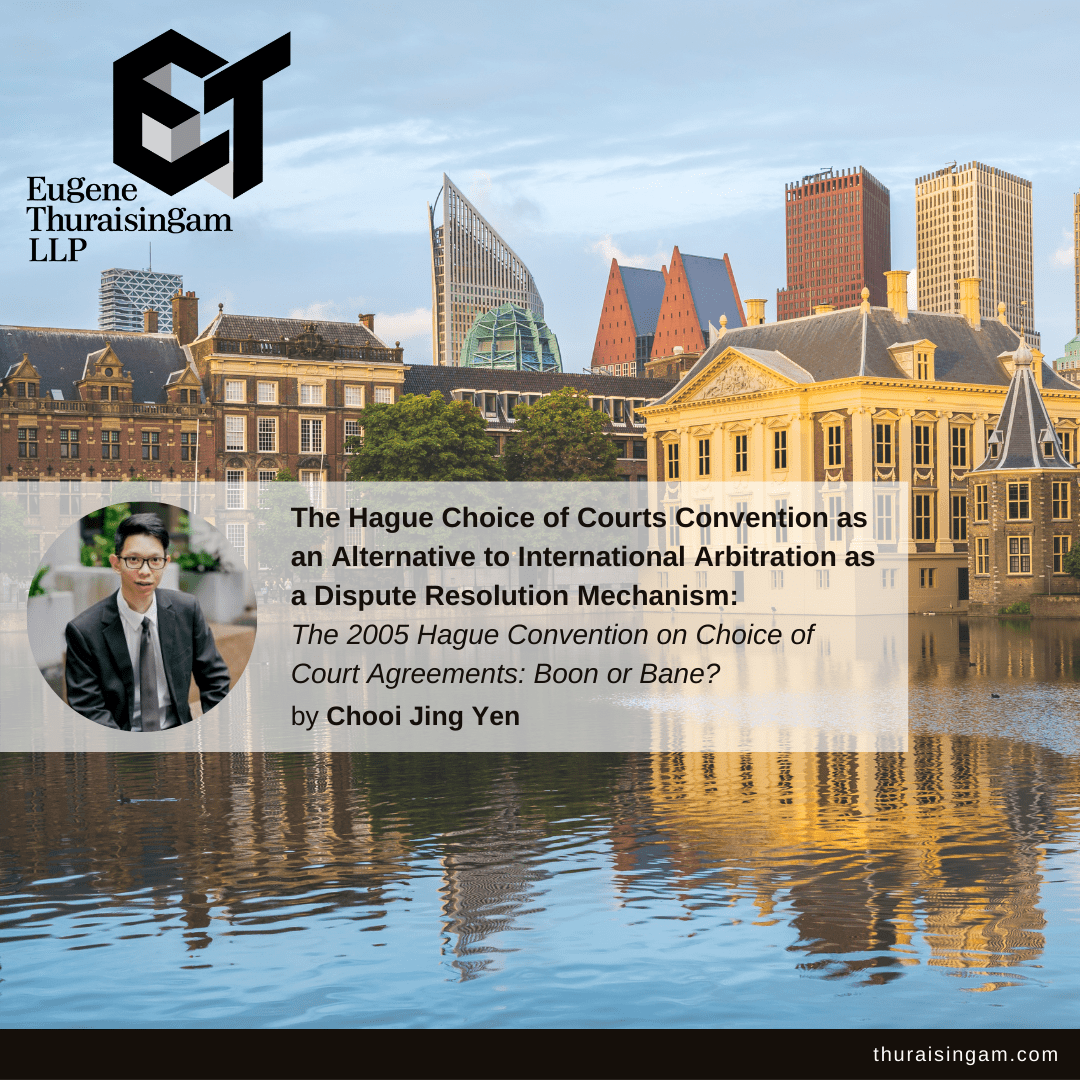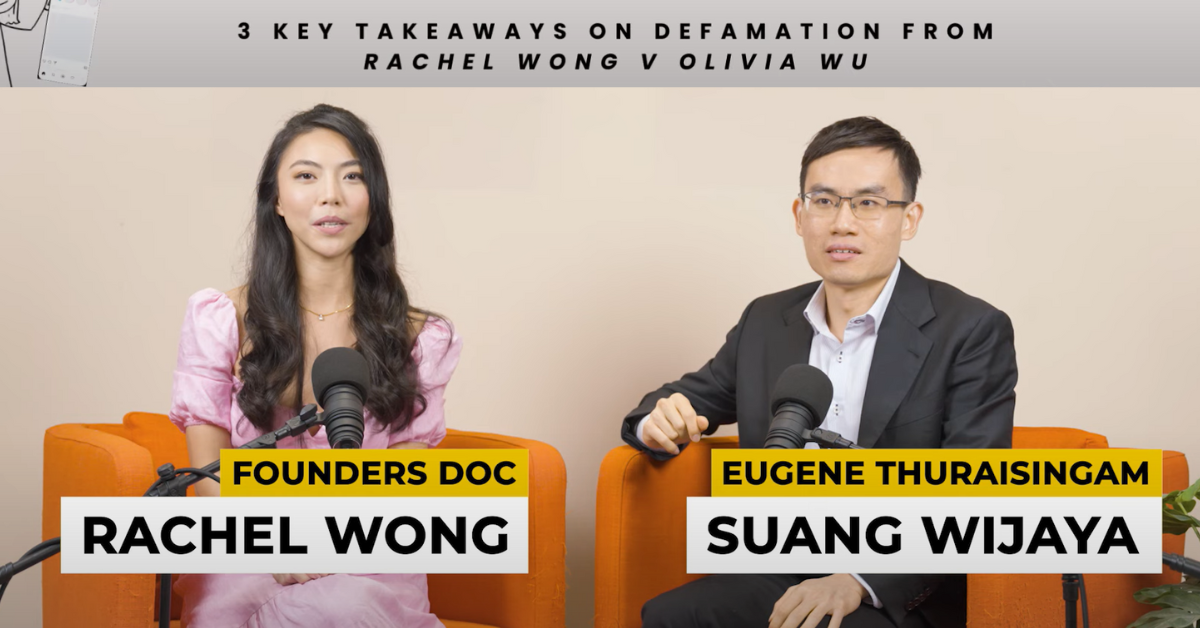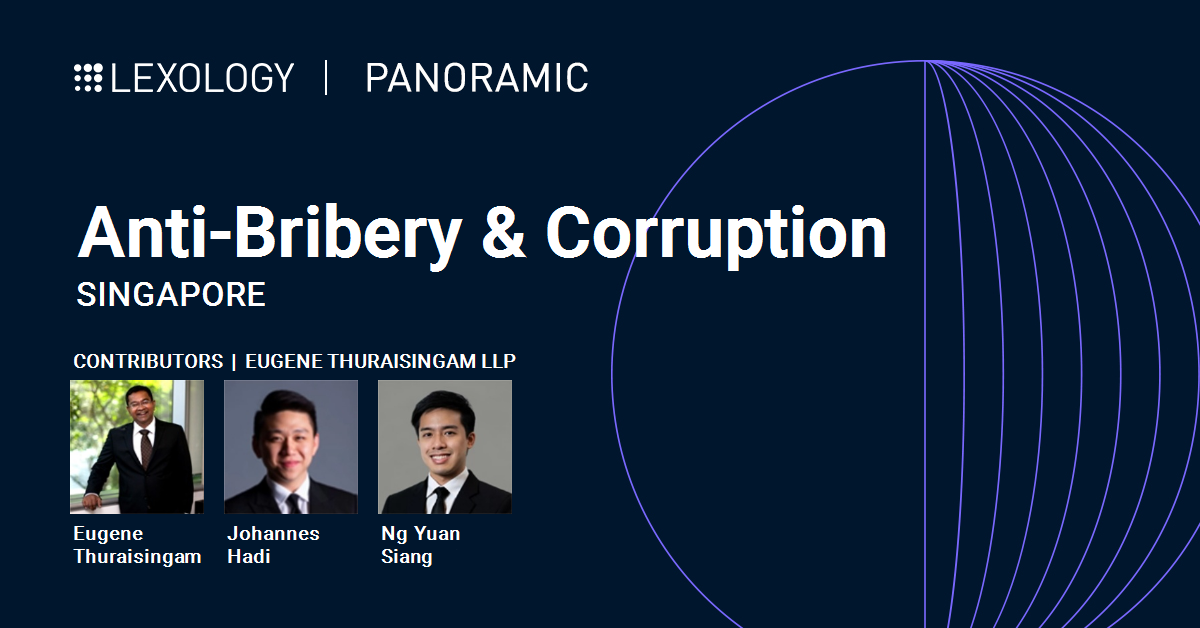The 2005 Hague Convention on Choice of Court Agreements: Boon or Bane?
The Hague Choice of Courts Convention as an Alternative to International Arbitration as a Dispute Resolution Mechanism
The Hague Convention on Choice-of-Court Agreements (the “Hague Convention”), concluded on 30 June 2005, has to-date seen ratification or accession by six jurisdictions: Mexico in 2007, the European Union (excluding Denmark) in 2015, Singapore in 2016, Montenegro in 2018, Denmark in 2018 and the United Kingdom in 2020 (following Brexit).
A key aim of the Hague Convention is to enhance the enforcement of judgments internationally and reduce the number of jurisdictional challenges that may be brought, where parties have already stipulated an exclusive choice of court agreement in their contracts. A previous post in a prominent arbitration publication has outlined the key features of the Hague Convention. It is useful to briefly summarise these.
First, Article 5 of the Hague Convention effectively stipulates that the courts of the jurisdiction chosen by the parties pursuant to an exclusive choice of court agreement must take jurisdiction over the dispute, and cannot decline to do so unless the said choice of court agreement is null and void under its laws. To strengthen this, Article 6 further stipulates that any other court must decline to take jurisdiction, unless any one of five specified exceptions applies. This operates almost akin to an anti-suit injunction, without the chosen court having to grant one.
Second, Article 8 of the Hague Convention requires the court of a Contracting State to recognise and enforce a judgment obtained pursuant to the Hague Convention, save in the situations set out in Article 9 of the Hague Convention.
In a speech in 2015, Singapore’s Chief Justice Sundaresh Menon commented that the Convention “holds the promise to be a game-changer in the international enforceability of court judgments” and “is a development to be closely watched.”
This was then followed by the enactment of the Choice of Court Agreements Act (the “Act”) in Singapore, which gave effect to the Hague Convention in 2016.
Since then, there has not been very much data about the efficacy of the Act in Singapore. To-date, there appears to be only one reported judgment regarding its use – that of Ermgassen & Co Ltd v Sixcap Financials Pte Ltd [2018] SGHCR 8. There, the plaintiff company sought to recognise and enforce in Singapore a summary judgment made in England against the defendant company for a liquidated sum. Since this at the time appeared to be the first application to be brought under the Act (and hence, effectively, the Hague Convention), the Singapore court convened an oral hearing on an ex parte basis in order to consider the merits of the application and the framework under the Act. The application was eventually granted.
A possible reason the Act has not been the game-changer that was envisaged is the relatively small number of contracting states. In comparison for example, the New York Convention on the Recognition and Enforcement of Foreign Arbitral Awards (the “New York Convention”) has a total of 168 parties.
Indeed, a series of posts in Kluwer Arbitration Blog has denounced the Hague Convention and called for all states that have ratified it (including Singapore) to immediately withdraw. This sounds like a bold claim. The exhortation is that the Hague Convention has grave defects, and a “failure to do so will inevitably result in gross procedural and other unfairness to innocent parties and will deter, rather than promote, cross-border trade and investment.”
The key objection appears to be that the very hallmark of the Convention is also its Achilles’ heel. The concern is that there are a very large number of jurisdictions where the judicial integrity, independence and competence of the courts is questionable. Thus, under the Hague Convention, an unscrupulous party could race to one of these jurisdictions and have it decide that there exists an exclusive choice of court agreement in its favour. This would mean that any other Contracting State cannot take jurisdiction over the dispute. Not just that, it must also be bound by and enforce a judgment given by the first, corrupt, Contracting State.
Citing empirical evidence, the author then suggests that the (independent and competent) courts of jurisdictions such as America, Canada, Australia, Singapore, Switzerland, Ghana and Uruguay should not commit to recognising judgments from the courts of jurisdictions such as Russia, China, Venezuela, Iran, the Congo, and Nicaragua, and that to do this would undermine party autonomy and deter cross-border trade and investment.
Is this an overblown concern?
First, the latter set of jurisdictions listed are not parties to the Hague Convention (though note that China has signed, but not yet ratified, the Hague Convention). So even if the underlying premise of incompetence and/or corruption is true, the risk remains a theoretical one.
Second, one would imagine that the parties themselves would be in a position to anticipate the pitfalls associated with dealing with a counterparty from a potentially corrupt jurisdiction better than we expect. Granted, the solution is not as simple as refusing to agree to an exclusive choice of court agreement – a corrupt court may still find one where there is none. The question is how the innocent party can force the corrupt court to egregiously go out of its way to contrive such an agreement. This depends on how the actual contract between the parties is drafted. On the one hand, parties may continue to opt for national court litigation pursuant to a non-exclusive jurisdiction clause. On the other hand, parties may entirely opt out of national court litigation by stipulating arbitration. But even if some parties elect to do so in some situations, this does not mean that national court litigation should be taken away as a viable option from all other parties in all situations by a coordinated withdrawal from the Hague Convention.
Third and relatedly, the safeguards in the Hague Convention against corruption are not actually that weak. Pursuant to Article 9(d) of the Hague Convention, the requested State may refuse recognition or enforcement if the judgment in the originating State was obtained by fraud in connection with a matter of procedure. Pursuant to Article 9(e) of the Hague Convention, the requested State may do so if recognition or enforcement would be manifestly incompatible with the public policy of the requested State, including situations where the specific proceedings leading to the judgment were incompatible with fundamental principles of procedural fairness of that State.
In other words, considerations of natural justice have been preserved. In Singapore, these exceptions to recognition and enforcement have been statutorily codified through Section 14 of the Act. Not just that – Singapore has taken this a step further and made refusal of recognition and enforcement under such circumstances compulsory. The Act separately provides for another set of circumstances where refusal or recognition and enforcement is discretionary, including under the exceptions set out at Articles (f) and (g) of the Hague Convention.
Whilst the Hague Convention has not seen the same efficacy as, for example, the New York Convention, this may be due to its small number of signatories and relative recency. To call for its complete abandonment by the international community may be somewhat premature. Suspicion of certain other jurisdictions is going to remain a feature of international dispute resolution, and therefore there will always be a tension between ensuring sufficient procedural safeguards and simplifying (and therefore reducing the costs of) international litigation. So one benefit of having such a small number of parties to the Hague Convention, for now, would appear to be that any concern about an existing Contracting State having to recognise or enforcement a judgment obtained through either fraud or incompetence has yet to materialise.






